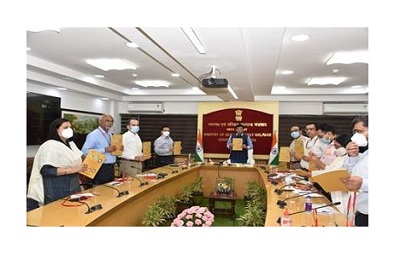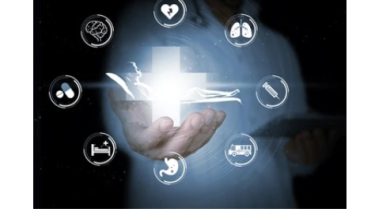Dr Mansukh Mandaviya releases AB-HWC assessment report in 18 states

The assessment was undertaken using a cross-sectional study design with a mixed-methods approach
Dr Mansukh Mandaviya, Union Minister for Health and Family Welfare, released the findings of a third party assessment of Ayushman Bharat – Health and Wellness Centres (AB-HWC) in 18 states of India, in the presence of Dr Vinod Paul, Member (Health), NITI Aayog and Rajesh Bhushan, Union Health Secretary, in New Delhi.
Appreciating the findings of the report, Dr Mandaviya stated, “Third party evaluation is important for proper assessment of the functioning and implementation of the scheme.”
The assessment of AB-HWCs in 18 states has been done in two phases by non-governmental entities, GRAAM and JHPIEGO as well as AIIMS, New Delhi from the government sector for the year 2020-21.
Dr VK Paul congratulated the research teams for the assessment report and suggested that a governance structure should be established for daily monitoring and review of AB-HWCs. He also highlighted the need to further train the human resources at AB-HWCs.
Rajesh Bhushan noted that this report will work like a foundation for future independent assessments of AB-HWCs and help in planning and redirecting efforts for ensuring the implementation of the objectives of the scheme.
The following are the key findings of the report:
- The launch of AB-HWC has enabled translation of the vision of moving from selective to comprehensive primary health care package enunciated in the National Health Policy 2017.
- The implementation of AB-HWC scheme is on track in most states with a clear roadmap for achieving targets set for December 2022.
- Overall, there has been an improvement in equity in access, despite existing constraints such as infrastructure availability and status of peripheral health facilities.
- Effective communication was noted from district to PHC-HWC and SHC-HWC resulting in translation of policy decisions into action, faster and better.
- Client satisfaction with the services provided was much higher among those who received services from HWCs as compared to those who received services from non-HWCs across all the four parameters measured – treatment, medicines, diagnostics and cleanliness.
- The Evaluation also brought out requirement of a definite timeline for rolling out all the services packages. The timelines have now been fixed.
The assessment was undertaken using a cross-sectional study design with a mixed-methods approach. The 18 states were selected to cover the spectrum of epidemiological transition levels as defined by the Global Burden of Disease India study with a higher focus on North-Eastern states. The study covered a sample of 317 facilities across eighteen states with 117 PHCs/UPHCs and 220 SHCs. 1,002 users from upgraded and 1,015 users from non-upgraded facilities were interviewed. The assessment covered both types of comparisons – a) pre and post conversion of the HWCs; and b) HWCs and non-HWCs within the same district.



